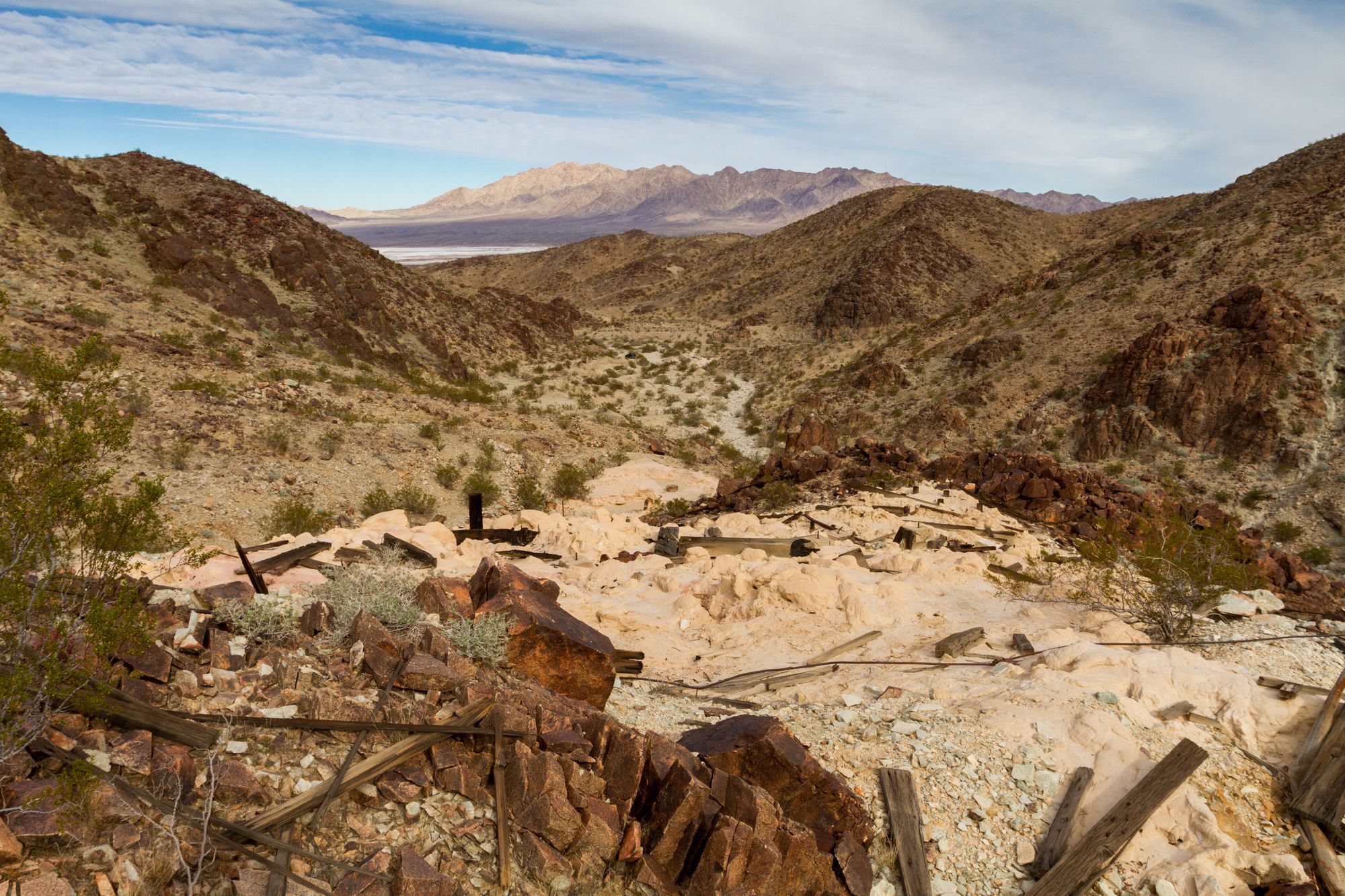The Carlyle mine, also known as the Carlysle or Carlisle mine, is perched on the steep north slope of the Pinto Mountains. It was first discovered in 1902, but extensive mine development didn't start until 1911. A mill was built sometime in the 1910s. In 1936, the Carlyle Mining Corporation was incorporated and brought in Ernest Ellis, a well-known mining engineer from Grass Valley, California. He managed the replacement of the older mill with a new ball mill and modern flotation cells. In 1937, a 250-horsepower Fairbanks-Morse diesel engine connected to a 150-KVA electric motor was added to the mill.
The lower adit of the mine was opened back to 1,500 feet, and the upper adit went 1,200 feet into the mountain, following a vein of silver and gold. The mine has over 5,000 feet of crosscuts, drifts, and raises. Due to the steep hillside, a tramway was built to transport ore and supplies efficiently. It was a two-bucket, 2,680-foot single-rope aerial tram. Water was pumped in via a three-inch pipe from Dale Lake.
Unfortunately, the mine’s heyday only lasted a few short years. On October 10, 1940, the mill, buildings, and all equipment were disposed of by auction on-site. The mine, however, was still being worked part-time by a lessee. Ore was being treated in the Gold Crown Mill. When WWII closed the mine for good in 1941, it had produced more than $125,000 in gold, silver, copper, and lead over its life. The heavily desert-varnished bedrock here is a mix of granites, feldspars, and diorites.
Today, only ruins remain of the mill and the tramway, but it is still an interesting site.




